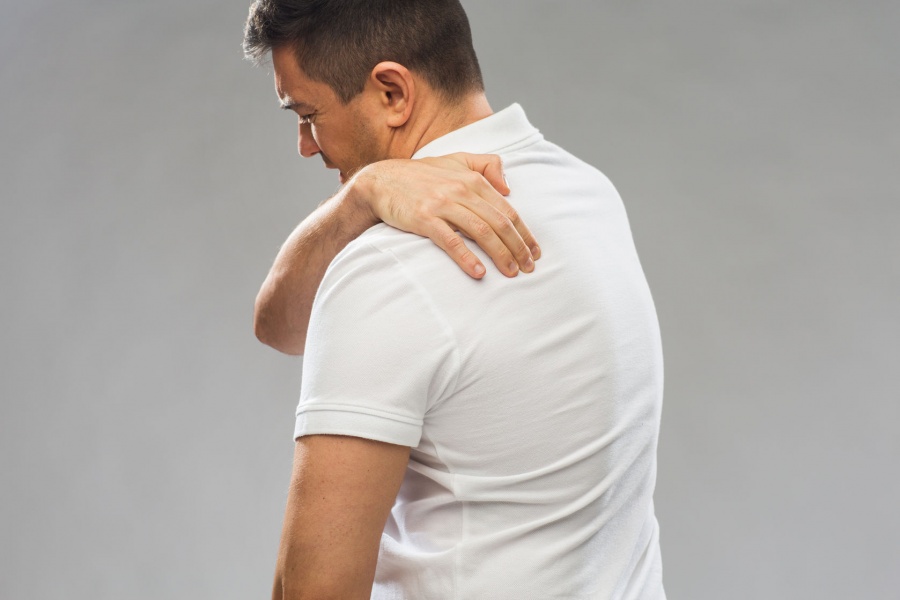What Is The Cause Of Back Pain
Back pain is a physical discomfort occurring anywhere on the spine or back, ranging from mild to disabling. Back pain often happens because something is off in the way your spinal joints, muscles, discs.
It can result from injury, activity and some medical conditions. Back pain can affect people of any age, for different reasons.
Causes of back pain
Back pain may be caused by overuse muscle strain or injury to the muscles, ligaments, and discs that support your spine.
Pressure on the spinal nerves from certain problems, such as a herniated disc. A fracture of one of the vertebrae.
Back pain can have causes that aren't due to underlying disease. Examples include overuse such as working out or lifting too much, prolonged sitting and lying down, sleeping in an uncomfortable position or wearing a poorly fitting backpack.
Strained muscles or ligaments, a muscle spasm, muscle tension, damaged disks injuries, fractures, or falls.
Activities that can lead to strains or spasms are:
- lifting something improperly
- lifting something that is too heavy
- making an abrupt and awkward movement
Back pain treatment
1.Rest and activity modification:
If the pain gets worse with certain movements or activities, such as doing household chores or participating in hobbies, a short rest period of a day or two may help. For example, if working in the garden exacerbates the pain, avoid that activity rather than push through the discomfort. After an initial rest period, trying to become active again is advised. Resting for too long can cause muscles in the back to become weaker, which could lead to more pain.
2 .Ice And Heat Therapy
Ice may be applied to reduce swelling within the first couple days of the pain starting, and heat is typically recommended after the first 48 hours. Other recommendations simply let patients choose whether they find more relief from ice or heat. Regardless of which temperature is preferred, it is important to limit applications to 20 minutes at a time and check the skin regularly to avoid tissue damage.
3. Massage:
Many people find that a massage can provide relief from back pain. Even if the effects are temporary, a good massage can help loosen tight muscles and get more blood flowing to the painful area. A few options for massaging the upper back include self-massage with a foam roller or ball, having a willing friend or family member provide a massage, or seeking out a professional.
4.Medication
Nonsteroidal anti-inflammatory drugs (NSAIDs), such as ibuprofen and naproxen, are available over the counter or in prescription strength. NSAIDs can reduce pain, fever, and inflammation. There are many different NSAIDS available with a prescription. Celecoxib (e.g. Celebrex) is a newer class of NSAIDs called COX-2 inhibitors. A COX-2 inhibitor works similarly to traditional NSAIDs and may have fewer gastrointestinal side effects, such as bleeding and ulcers.
Prevention of back pain
Steps to lower the risk of developing back pain
Exercise: Regular exercise helps build strength and control body weight. Guided, low-impact aerobic activities can boost heart health without straining or jerking the back. Before starting any exercise program, talk to a health care professional.
There are two main types of exercise that can be done to reduce the risk of back pain:
1.Core-strengthening exercises work the abdominal and back muscles, helping to strengthen muscles that protect the back.
2.Flexibility training aims at improving core flexibility, including the spine, hips, and upper legs.
2.Flexibility training aims at improving core flexibility, including the spine, hips, and upper legs.
Diet: Make sure your diet includes enough calcium and vitamin D, as these are needed for bone health. A healthful diet also helps control body weight.
Smoking: A significantly higher percentage of smokers have back pain incidences compared to non-smokers of the same age, height, and weight.
Body weight: The weight people carry and where they carry it affects the risk of developing back pain. The difference in back pain risk between obese and normal-weight individuals is considerable. People who carry their weight in the abdominal area versus the buttocks and hip area are also at greater risk.
Posture when standing: Make sure you have a neutral pelvic position. Stand upright, head facing forward, back straight, and balance your weight evenly on both feet. Keep your legs straight and your head in line with your spine.
Posture when sitting: A good seat for working should have good back support, arm rests and a swivel base. When sitting, try to keep your knees and hips level and keep your feet flat on the floor, or use a footstool. You should ideally be able to sit upright with support in the small of your back. If you are using a keyboard, make sure your elbows are at right-angles and that your forearms are horizontal.
Lifting: When lifting things, use your legs to do the lifting, rather than your back. Keep your back as straight as you can, keeping your feet apart with one leg slightly forward so you can maintain balance. Bend only at the knees, hold the weight close to your body, and straighten the legs while changing the position of your back as little as possible.
Bending your back initially is unavoidable, but when you bend your back try not to stoop, and be sure to tighten your stomach muscles so that your pelvis is pulled in. Most important, do not straighten your legs before lifting, or you will be using your back for most of the work.
Do not lift and twist at the same time: If something is particularly heavy, see if you can lift it with someone else. While you are lifting keep looking straight ahead, not up or down, so that the back of your neck is like a continuous straight line from your spine.
Moving things: It is better for your back to push things across the floor, using your leg strength, rather than pulling them.
Shoes: Flat shoes place less of a strain on the back.
Driving: It is important to have proper support for your back. Make sure the wing mirrors are properly positioned so you do not need to twist. The pedals should be squarely in front of your feet. If you are on a long journey, have plenty of breaks. Get out of the car and walk around.
Bed: You should have a mattress that keeps your spine straight, while at the same time supporting the weight of your shoulders and buttocks. Use a pillow, but not one that forces your neck into a steep angle.










.jpeg)